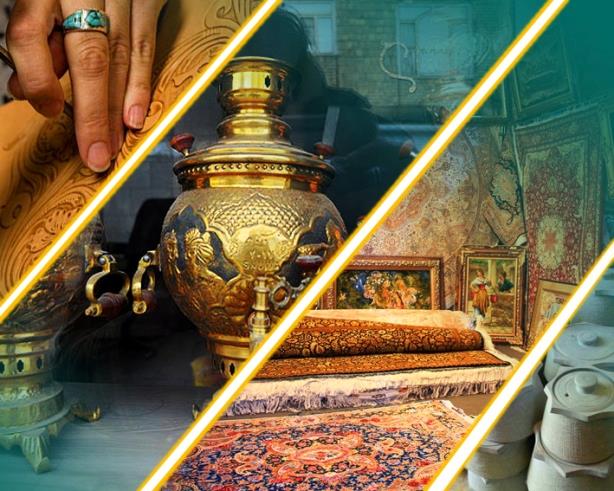
Traditional
Har Kāreh
Har kāreh means "multipurpose" and refers to cooking pots, other types of containers, and decorative items made of serpentine stone. The stone has been in use for over a century and originates from Khalaj Mountain, behind Kooh Sangi. Serpentine stone is soft, making it ideal for carving and shaping and it's resilient over fire.
Wicker Products
Wicker (haseer in Persian) weaving is a popular past time in the countryside town of Torghabeh. The wicker, which has a nature brownish-red color, is taken from the local Judas trees native to the area. Many small to large products are made from the wicker like mats, baskets, furniture, and so on.
Carpets, kilims
The most beautiful and exquisite handwoven carpets are those belonging to Iran, which has perfected the art spanning over 2000 years. There are three sizes of handwoven carpets: (1) the carpet or Farsh or Ghāli (6’ x 4’), (2) the rug or Ghālicheh (6’ x 4’), and (3) the kilim or Geleem (2'3" x 4'3").
The asymmetrical or Persian knot is typical of the carpets of Mashhad, although the symmetrical or Turkish knot is also used. Common styles found in Mashhad carpets are the Shah Abbasi medallion and corner with large pendants in curvilinear designs in deep reds and blues; as well as the Herati, Khorasani, and Boteh design with repetitive motifs across the carpets. Common colors for these two styles are beige, camel, and brown. The Persian kilim (geleem in Persian) is an art developed over many centuries by villagers and nomads, and nature and the ancient culture of Iran is the main inspiration for the designs and colors. A true Persian kilim has organic symbols in its design; the colors and materials are all derived from natural plants native to the land of Iran, and are woven with hemp, cotton, and wool threads. The kilim is an inexpensive option to the Persian rug if you want to take back a traditional Iranian souvenir.
In Mashhad, common places to buy a kilim are the Carpet Bazaar, the countrysides of Torghabeh and Shandeez, and large shopping centers.
Samovars
Black tea made in a samovar has a distinct old-world taste that cannot be replicated by a teakettle. The origin of the samovar is thought to be either Russian or Iranian, although the name is Russian and means self-boiler. Modern samovars use gas or electricity and come in an array of shapes, sizes, and makes. If you or someone special in your life is a serious tea drinker, then a samovar is the perfect gift to buy.

